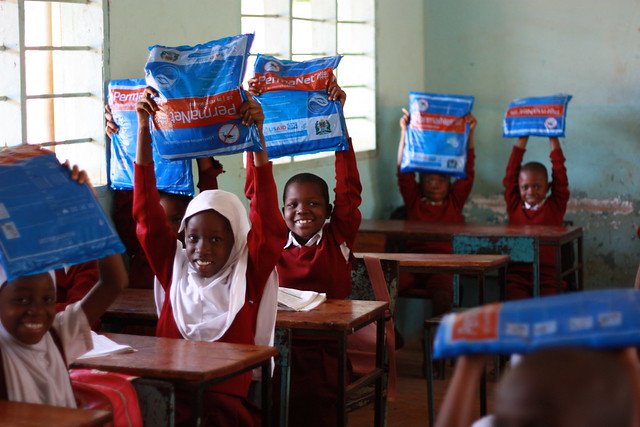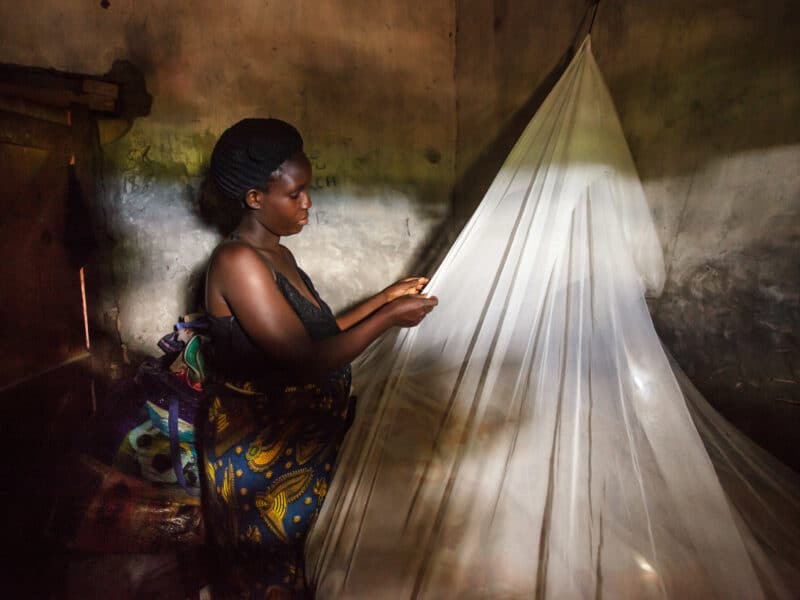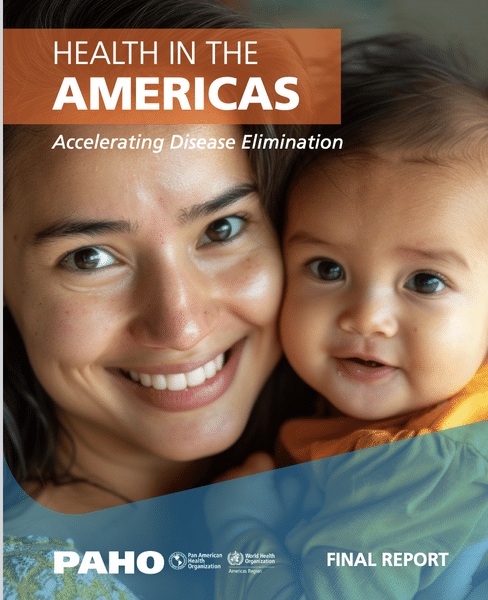The Johns Hopkins Center for Communication Programs is launching a user-friendly, interactive website that pulls together the latest data on trends in the use of insecticide-treated nets in sub-Saharan Africa and Asia to prevent malaria.
The site, which includes easily downloadable data, charts and maps, is designed to help national malaria control programs, donors and others who work in the field to prioritize resources and focus social and behavior change strategies accordingly.
“The data tell us that people who have nets are sleeping under them,” says CCP’s Hannah Koenker, PhD, director of the U.S. President’s Malaria Initiative’s VectorWorks project. “This website highlights at a glance where there are enough nets and where we need to do better. It also provides insights based on geography, seasonality, age and gender. It’s the kind of data decision makers need to get the best results.”
The World Health Organization estimates that between 2000 and 2015, the rate of new malaria cases declined by 37 percent globally and malaria deaths fell by 60 percent, with 6.2 million lives saved. Three quarters of those gains can be attributed to interventions such as insecticide-treated bed nets and indoor spraying for mosquitoes.
The new website is a collaboration between PMI VectorWorks and the USAID-funded Breakthrough ACTION project led by CCP.
The website is based on a net use and access report created in 2014 by VectorWorks. It offers a positive picture of net use in many countries while showing there is still work to be done. The report has been the most highly downloaded resource created under PMI VectorWorks.
“Net use behavior is much stronger than we thought,” Koenker says. “By and large, people have been doing what we ask them to do, which is sleep under the nets they have and to prioritize pregnant women and young children. Now we have to take what we have learned and make sure that the global malaria community is providing the nets they need and puts an extra emphasis on places and groups and times of year when net use behavior still falls short.”
For the first few decades of bed net distribution, net use was poorly understood. Surveys showed that a large percentage of households owned one or more nets, while at the same time data would show that far fewer people actually sleep under a net. That didn’t necessarily mean that people had nets they weren’t using. It turned out to mean there weren’t enough nets in the house for everyone to sleep under one. Since 2013, net access has been determined for each individual, making net use by people who have one a more accurate representation of behaviors in each home.
The information on the site illustrates how well countries are doing – and how well they have done over time. There are also expanded observations and implications available for each country.
PMI is already using the site’s maps as part of its country-specific malaria operational plans. Others are using the data to design research and tailor social and behavior change activities. The data can also be used to make other decisions about how to increase net use.
To learn how to use this new online resource and see how this data is already being used for decision-making, register here for a webinar on Wednesday, Aug. 28 at 9 a.m. EDT.





